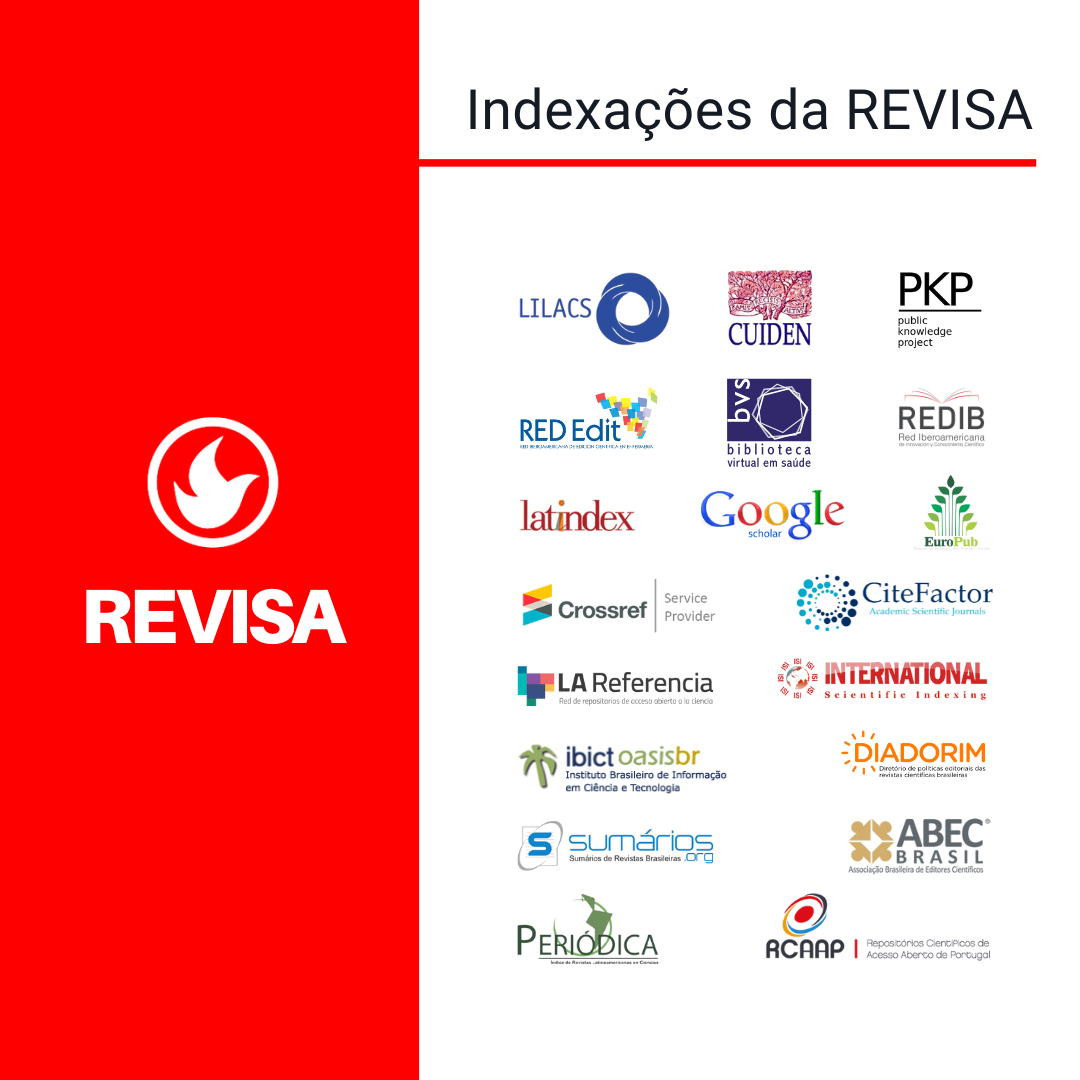The interrelation of consumer accidents and health assistance: integrative review
Keywords:
Delivery of Health Care, Patient Care Team, Consumer Advocacy, Health Danger Provoked by Substances, Products and MaterialsAbstract
Objective: to analyze the scientific production on the interrelationship between consumer, product and health. Method: this is an Integrative Literature Review carried out in the libraries and databases: VHL, PubMed, Scielo and Portal do Jornal CAPES. Two studies were found after application of two uncontrolled descriptors: “consumidor/ consumer”, “acidente/acident” combined with the recommended Boolean operator "AND" and two respective inclusion and exclusion criteria. Results: When analyzing two selected studies, it is possible that three categories may arise: Main factors that lead to the occurrence of consumption accidents, Methods for the prevention of two consumption accidents, Or the role of the health team in the prevention of two consumption accidents. Conclusion: In this regard, it is understood the importance of articulation for consumer accident prevention strategies, especially not referring to the promising role of the health team in this area, not involving prevention education and evaluations for the improvement of two products.
References
Brasil. Lei n. 8.078, de 11 de setembro de 1990. Dispõe sobre a proteção do consumidor e dá outras providências [internet]. Brasília, 1990. [citado 2019 nov 09]. Disponível em: https://legislacao.presidencia.gov.br/ atos/?tipo=LEI&numero=8078&ano=1990&ato=376UTRq1keFpWTab7
Almeida H, Toledo J. Qualidade Total do Produto. Rev. Produção. 1992; 2(1): 21-37. doi: https://doi.org/10.1590/S0103-65131992000100002.
Souza JS, Miyazaki VK, Enoque AG. Reflexões acerca do consumo verde e sustentável na sociedade contemporânea. Cad. EBAPE.BR. 2017; 17(2), 403-413. 2017. doi: https://doi.org/10.1590/1679-395167434.
Pereira LFL et al. Consumir e consumir-se: gozo e capitalismo na contemporaneidade. Rev. Subj. 2019; 19(3): e7400. doi: http://dx.doi.org/ 10.5020/23590777.rs.v19i3.e7400.
Correia W, Soares M. Segurança do Produto: Uma Investigação na Usabilidade de Produtos de Consumo. Rev. Estudos em Design. 2007; 15(2): 1-20. doi: https://doi.org/10.35522/eed.v15i2.
Anais do 240 Encontro Nacional de Engenharia de Produção; 03-05 nov.2004; Florianópolis (SC) Brasil: ABEPRO; 2004.
Sistema Inmetro de Monitoramento de Acidentes de Consumo [homepage na internet]. Acidente de consumo [acesso em 09 nov 2019]. Disponível em: http://www.inmetro.gov.br/consumidor/acidente_consumo.asp?iacao.
Mendes KDS, Silveira RCCP, Galvão CM. Revisão integrativa: método de pesquisa para a incorporação de evidências na saúde e na enfermagem. Texto & Contexto Enferm. 2008;17(4):758-64. doi: https://doi.org/10.1590/S0104-07072008000400018.
Ministério da saúde (BR) Secretaria de Ciência, Tecnologia e Insumos Estratégicos. Departamento de Ciência e Tecnologia. Diretrizes metodológicas Sistema GRADE manual de graduação da qualidade da evidência e força de recomendação para tomada de decisão em saúde. Brasília (DF); 2014.
Mayer J, Anderson C, Gabriel K, Soweid R. A randomized trial of an intervention to prevent lawnmower injuries in children. Patient Education and Counseling. 1998; 34(3): 239–246. doi: https://doi.org/10.1016/s0738-3991(98)00032-9
Drew C. Unintentional strangulation in children: a professional approach to the problem. International Journal of Trauma Nursing. 2001; 7(2): 60-3. doi: 10.1067/mtn.2001.115460.
Kuska T. Child Passenger Protection: Then and Now. Journal of Emergency Nursing. 2002; 28(1): 52-6. doi: https://doi.org/10.1067/men. 2002.118725
Stephenson M. Danger in the Toy Box. Journal of Pediatric Health Care. 2005; 19(3): 187-189. doi: https://doi.org/10.1016/j.pedhc.2005.03.002 .
Onders B, Kim E, Chounthirath T, Hodges N, Smith G. Pediatric Injuries Related to Window Blinds, Shades, and Cords. Pediatrics. 2017; 141(1): 1098-4275. doi: https://doi.org/10.1542/peds.2017-2359.
Mizoguchi M, Miura G, Ojimac F. Study of Child-resistant Packaging Technologies to Prevent Children from Accidental Ingestion of Drugs in Japan. Yakugaku Zasshi. 2018; 138(8): 1103-1110. doi: 10.1248/yakushi.18-00013.
Amaral A, Pascon D, Costa J. Acidentes domésticos infantis: percepção e ações dos profissionais de saúde da urgência e emergência. Rev. Serviço Social e Saúde. 2017; 16(2) : 171-188. doi: https://doi.org/10.20396/sss.v16i2.8651461.
Martin G, Heimstra N. Consumer Input for Child Safety Programs. J Sch Health. 1974; 44(2):80-2 doi: 10.1111/j.1746-1561.1974.tb05202.x.
Swartz M. Playground Safety. Journal of Pediatric Health Care. 1992;6(3): 161-2. doi: https://doi.org/10.1016/0891-5245(92)90149-X.
Kwon S, Yoo H, Song E. Korean Consumers’ Recognition of Risks Depending on the Provision of Safety Information for Chemical Products. International Journal of Environmental Research and Public Health. 2020; 17(4): 1-12. doi: https://doi.org/10.3390/ijerph17041207 .
Downloads
Published
How to Cite
Issue
Section
License
Copyright (c) 2024 Revista de Divulgação Científica Sena Aires

This work is licensed under a Creative Commons Attribution 4.0 International License.
-
Atribuição — Você deve dar o crédito apropriado, prover um link para a licença e indicar se mudanças foram feitas. Você deve fazê-lo em qualquer circunstância razoável, mas de nenhuma maneira que sugira que o licenciante apoia você ou o seu uso.
- Sem restrições adicionais — Você não pode aplicar termos jurídicos ou medidas de caráter tecnológico que restrinjam legalmente outros de fazerem algo que a licença permita.





